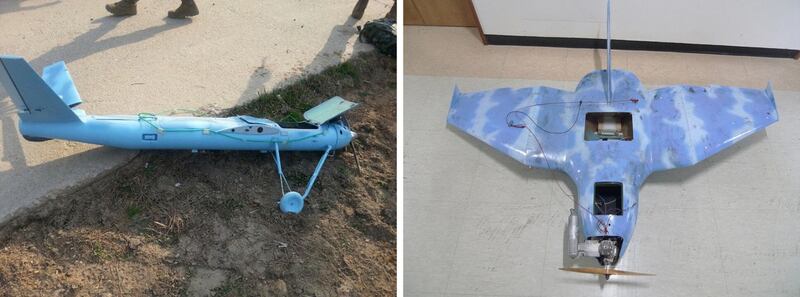North Korea raised alarms in South Korea earlier this week when it sent five drones across the border for the first time in five years, prompting Seoul to fire warning shots and scramble jets before the unmanned aircraft returned home hours later.
But sources in North Korea told Radio Free Asia that fuel shortages are so acute that the military can barely keep its drone fleet in the air, and that sometimes they mix castor oil with gasoline, which causes engine failures and frequent crashes during training.
“Gasoline … is running low, so castor oil is mixed in and used,” said a source in North Korea with knowledge of the country’s military who spoke on condition of anonymity for fear of reprisal.
“If the operator is not supplied with gasoline, they will run the drone’s engine on castor oil,” the source said. As a result, “there are frequent drone crashes due to engine failure during training.”
While castor oil can be used as a biofuel with a few modifications, it is generally seen as a poor source of fuel due to its unfavorable engine-related technical properties.
The source confirmed that artillery battalion soldiers under the 8th Corps in North Pyongyang province “often use drones for practical training” and that the military uses drones to “detect and set targets to improve the accuracy of artillery fire,” as well as for topographic reconnaissance and battle training,
But he added that gasoline is in such short supply, drone training is “limited to one hour per day,” if at all.

South Korean response
South Korean military apologized on Tuesday for failing to shoot down the drones and President Yoon Suk-yeol vowed to speed up the creation of a military unit supplied with cutting edge drones to respond to such incidents in the future.
Media reports said that one of the drones flew close to Seoul could have been used to run surveillance operations. It was not known
Tensions on the Korean Peninsula have risen as the North has fired a record number of missiles this year, and the United States and South Korea have boosted their joint military training.
Monday’s drone incursions came on the same day that Kim Jong Un warned of a “more intense struggle” to come for North Koreans, including an increased level of provocation by the U.S. and South Korea, at the Plenary Meeting of the Central Committee of the Workers' Party of Korea in Pyongyang.
Used for infiltrating
Drones, also called unmanned aerial vehicles, or UAVs, were first added to the North Korean military’s arsenal in the late 1990s and only supplied to special forces for “infiltration training into South Korea,” a second source from Kangwon province.
Since Kim Jong Un assumed power in 2011, the source said, the military began developing multipurpose UAVs that can strike enemy targets with an explosive payload and deploying them to strategic units located on the country’s eastern, western, and central fronts.
Sources told RFA that North Korean military authorities are mobilizing talented students from elite schools such as the Kim Chaek University of Technology and North Korea’s College of Science in the design and production of drones.
“The drones introduced in the training of tactical units under the 1st and 5th Corps located in Kangwon province are used for reconnaissance to precisely strike targets in case of emergency or photograph the location of units and related features in South Korea,” said the source, who also declined to be named.
“However, gasoline is needed to mobilize military drones for daily training. As the military authorities, who are short of gasoline, supply operators with unrefined castor oil as fuel, the drones’ engines are overloaded and crashes occur frequently.”
The source said that drones intended to enter South Korea operate on solid fuel, rather than gasoline, so that they can fly longer. However, solid fuel is even scarcer than gasoline, they said.
Translated by Claire Shinyoung Oh Lee. Written in English by Joshua Lipes. Edited by Malcolm Foster.
